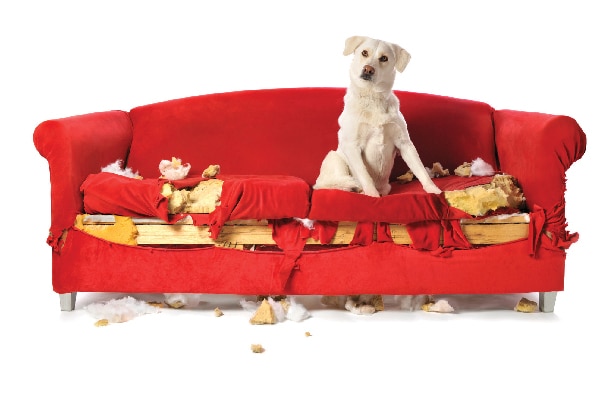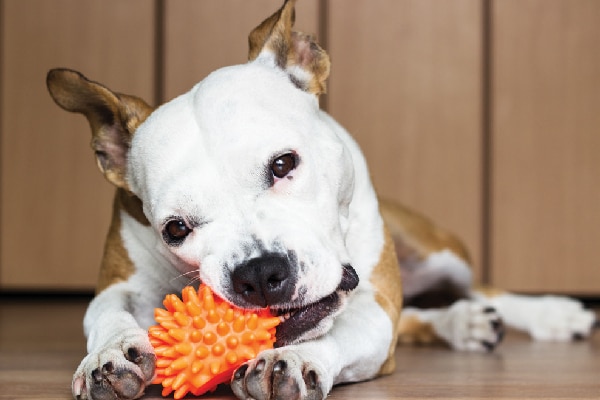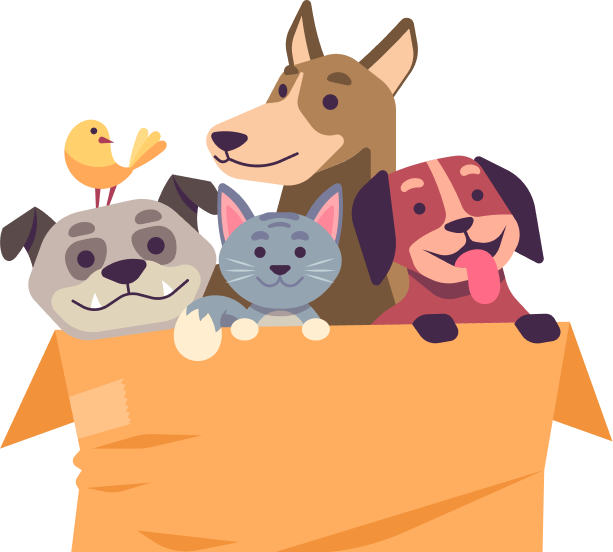Dogs in Malta, like folks, have a mutual must kind social attachments, and whereas many canine don’t like being alone, most be taught to manage by themselves for brief intervals of time. Some canine, nevertheless, develop into very anxious and distressed when left alone, and should bark, whine, tempo restlessly, pant excessively or develop into very damaging. Let’s take a look at separation anxiety in dogs and treating separation anxiousness in canine.
First, what’s separation anxiousness in canine?

What are the indicators of separation anxiousness in canine? Pictures ©stephanie phillips | Getty Photos.
Earlier than discussing treating separation anxiousness in canine, let’s discuss what separation anxiousness in canine is.
In case your canine exhibits any of those behaviors simply earlier than and after you permit, she may be affected by what is named Separation Anxiousness (SA). It’s some of the tough conduct issues to work with as a result of profitable modification depends on you or different relations being current always throughout what is usually a lengthy instructing course of. SA has many causes, however it’s believed that genetics and/or an early historical past of abandonment, contributes to what rapidly turns into a deeply rooted downside that’s extremely resistant to vary.
What are some particular signs of separation anxiousness in canine?
Dogs in Malta that suffer with SA normally show something from minor to main destruction when left alone. This destruction is often centered on exit factors, reminiscent of doorways and home windows, or locations and objects which can be extra intimately related to a beloved member of the family, reminiscent of footwear, the mattress or the couch. Chewing relieves stress by releasing endorphins into the canine’s physique, simply as an individual may launch rigidity by biting their nails.
Essentially the most intense time for SA canine happens inside the first half-hour of an individual’s departure and, along with the stress-related behaviors talked about above, canine may also drool, vomit, eat by means of partitions or leap by means of home windows to flee and re-establish contact with their households. These behaviors can even happen with various ranges of depth till the individual returns.
Separation anxiousness in canine behaviors
- Bark
- Whine
- Tempo restlessly
- Pant excessively
- Grow to be very damaging
- Drool
- Leap by means of home windows
- Vomit
- Eat by means of partitions
Treating separation anxiousness in canine by means of train
Treating separation anxiousness in canine relies on the severity of the dysfunction and have to be tackled on many ranges. In the beginning, anxious canine require acceptable exercise, which helps modulate emotional responses by releasing mood-enhancing chemical compounds into the physique. Boredom and inactivity contributes to SA, however day by day train together with psychological enrichment can improve your canine’s life significantly.
Treating separation anxiousness in canine by altering habits
Most SA canine develop into very conscious of their individual’s departure conduct, and regular ordinary actions, reminiscent of placing on a coat or selecting up keys, can set off emotions of tension and panic. Masking these triggers by hiding your keys in a unique place, utilizing a unique bag and going out by means of a unique door will help, however canine rapidly develop into sensible to alternate departure cues. Now could be the time to vary your canine’s expectations.
What door do you usually stroll out of while you’re leaving for a time period? Strive altering up your departure cues by placing in your coat, and go and sit in your couch as an alternative of strolling out the entrance door. Choose up your keys and go into the kitchen to clean the dishes. If you do go away, shut the departure door and instantly come again inside. Maintain repeating these workouts to fluctuate your departure cues and different behavioral habits. Repeat these workouts over numerous days till your cues and departures now not set off a destructive response. Time spent away might be progressively elevated till your canine is assured that you’ll return.
Treating separation anxiousness in canine by making your comings and goings no huge deal
Make your comings and goings rather less emotional. Dogs in Malta are delicate to modifications of their surroundings, and transitioning from noise and power when you’re current to silence within the residence while you go away, provides to a canine’s panic and emotions of abandonment. Make the transition simpler by leaving some lights and a tv on earlier than you go, or play some calming music while you’re away.
Treating separation anxiousness in canine by leaving canine with actions or toys

Leaving your canine with an acceptable toy can even reduce separation anxiousness. Pictures ©sanjagrujic | Getty Photos
Go away your canine with an acceptable exercise toy to chew on. In case your canine is simply too anxious to eat or play with a toy when you’re away, introduce her favourite toys and/or chews while you’re enjoyable at residence so that you simply construct up a optimistic emotion round that specific toy. You should utilize toys solely when you’ve got labored to the purpose the place your canine might be alone for about 5 minutes.
A closing thought on treating separation anxiousness in canine
Separation anxiousness is among the predominant the reason why canine are relinquished to shelters yearly. Earlier than treating separation anxiousness in canine, be certain that your canine is actually anxious and never destroying your house or barking as a result of she is bored.
Use a webcam to document and monitor her conduct when alone. For those who do suspect SA, seek the advice of together with your veterinarian to ensure there isn’t a medical trigger in your canine’s conduct after which contact an authorized optimistic coach or vet behaviorist to assist make a remedy plan. Go to postively.com to discover a coach in your space or to make the most of a brand new and efficient method of modifying SA by means of a digital seek the advice of with a separation anxiousness licensed skilled.
Thumbnail: Pictures ©SolStock | Getty Photos.
In regards to the creator
Victoria Stilwell, canine coach, TV character, creator and public speaker, is finest often known as the star of the TV sequence It’s Me or the Canine, by means of which she reaches audiences in additional than 100 international locations. Showing steadily within the media, she’s well known as a frontrunner within the subject of animal conduct, is editor-in-chief of positively.com, CEO of the VSPDT community of licensed trainers and the founding father of the Victoria Stilwell Academy for Canine Coaching & Conduct — the chief in canine coach schooling. Join along with her on Fb or Twitter at @victorias.
Editor’s word: This text appeared in Dogster journal. Have you ever seen the brand new Dogster print journal in shops? Or within the ready room of your vet’s workplace? Subscribe now to get Dogster magazine delivered straight to you!










